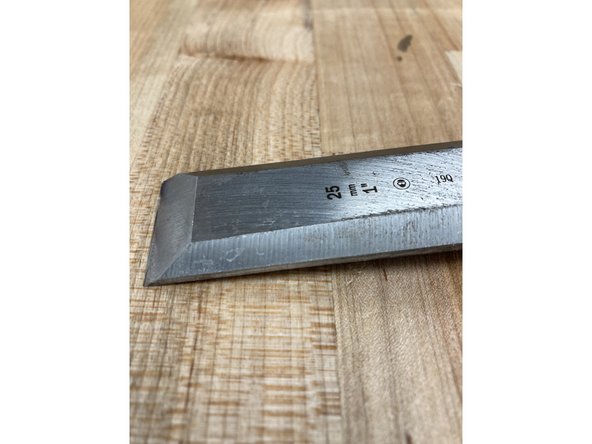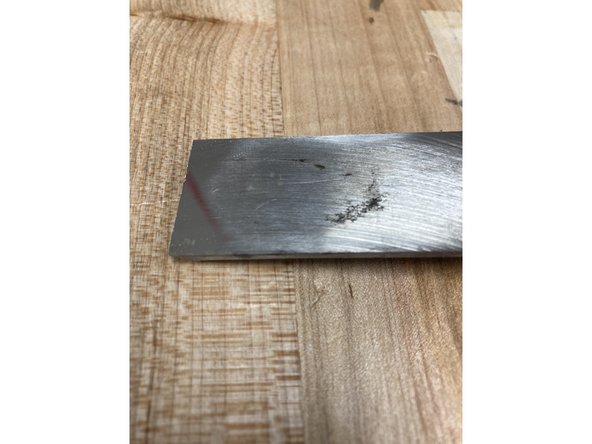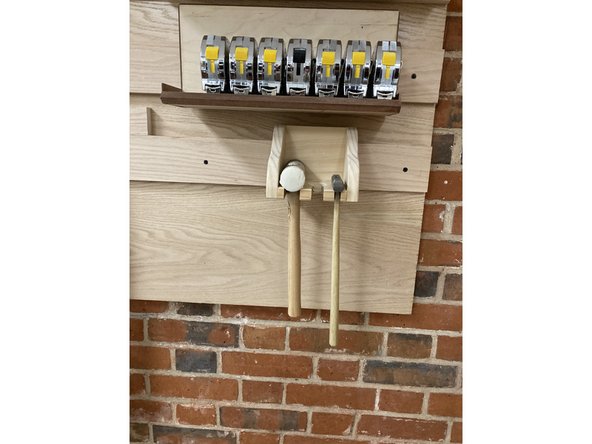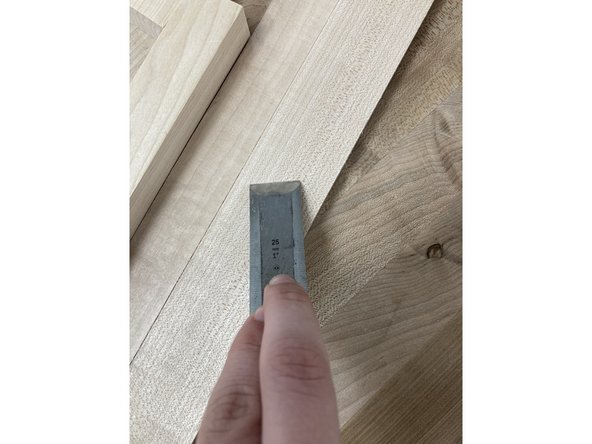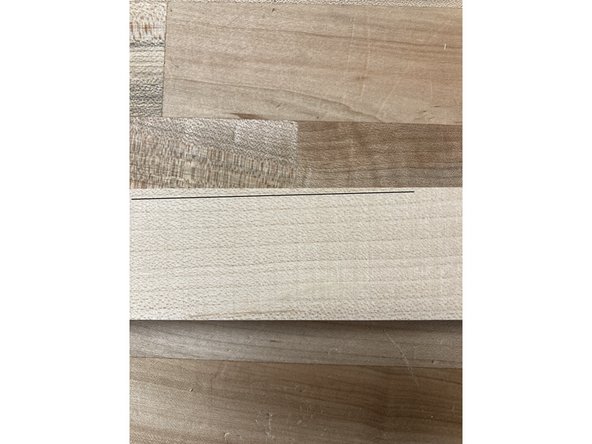Tools
Parts
No parts specified.
-
-
Ensure proper PPE is worn.
-
Goggles
-
-
-
Chisels are used mainly for fine adjustments that wouldn't be possible with a saw.
-
They can get into tight spaces, and as the blades aren't serrated, can take off less material in one pass.
-
Chisels have two sides. One is beveled, while the other is flat. For most applications, you will want to use the flat side.
-
-
-
Select appropriate chisel for job.
-
Inspect chisel.
-
Look for signs of:
-
Rust
-
Dried glue
-
Chips
-
Ensure blade is sharp.
-
If edge is dull, consult tool sharpening guide.
-
-
-
Depending on the job, you will want to hold your chisel different ways.
-
For scraping glue, you want to hold the chisel at a low angle with the face of the wood, as shown in the picture, to minimize taking off excess material.
-
For most applications, you will want to use a mallet (pictured) for added force and control. Use the softer (gray) end.
-
Chisels are sharp tools and can easily cut you. Never chisel towards yourself, and if you feel uncomfortable ask for help.
-
-
-
For applications where you don't need a mallet and you need more precision, usually paring cuts, hold the back of the chisel as pictured.
-
A paring cut is for taking off very small amounts of material, usually when shaving down a joint for a perfect fit. Hold the chisel almost flat against the wood, and just use the force from your hand (no mallet).
-
The chisel will try to follow the grain. If the grain of the wood goes too deep for your cut, come the other way to avoid taking off too much material.
-
In the picture, the grain roughly follows the black line.
-
-
-
Always make sure the chisel is clean and dry before putting it away.
-
Wipe off any wood glue, clean off any saw dust, and dry with a shop towel.
-
Cancel: I did not complete this guide.
One other person completed this guide.





